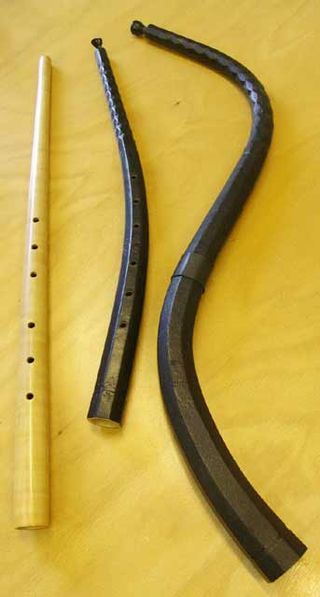Zink 
The Most Versatile Renaissance Musical Instrument Was The Cornett Or Zink. Between 1500 And 1650 The Zink Was Used inside And Out, In Classical Music, Ballroom Music, Town Bands, Rural Households, At Church, And Court. Its individuation Is As A Result Of Its Hybrid Construction: A Awfully Tiny Cup Mouthpiece (Played On The Aspect Of The Mouth Wherever The Lips Ar Thinner) Is Connected To A Hollow Out Piece Of Sinusoidal Wood Or Ivory. Six Finger Holes And A Thumb Hole Ar Trained Within The Body Of The Zink And It's Digitate In A Lot Of A Similar Manner As A Recorder. A Competent Performing Artist Will Build The Zink Sound As Loud As A Trumpet Or Softly Enough To Mix With Recorders. No Alternative Instrument Came Thus Near The Sound Of The Human Voice. Roger North Even Declared That One Would Possibly Mistake It For A Alternative Adult Male.

The Most Versatile Renaissance Musical Instrument Was The Cornett Or Zink. Between 1500 And 1650 The Zink Was Used inside And Out, In Classical Music, Ballroom Music, Town Bands, Rural Households, At Church, And Court. Its individuation Is As A Result Of Its Hybrid Construction: A Awfully Tiny Cup Mouthpiece (Played On The Aspect Of The Mouth Wherever The Lips Ar Thinner) Is Connected To A Hollow Out Piece Of Sinusoidal Wood Or Ivory. Six Finger Holes And A Thumb Hole Ar Trained Within The Body Of The Zink And It's Digitate In A Lot Of A Similar Manner As A Recorder. A Competent Performing Artist Will Build The Zink Sound As Loud As A Trumpet Or Softly Enough To Mix With Recorders. No Alternative Instrument Came Thus Near The Sound Of The Human Voice. Roger North Even Declared That One Would Possibly Mistake It For A Alternative Adult Male.
Very Little Breath Is Employed In Enjoying The Zink. Mersenne Mentions A French Court Musician, M.
Sourin Of Avignon, Un Agency May Play 100 Measures In One Breath!!
According To Sculpturer, It Had Been His Cornett Enjoying That Procured Him A Foothold With Pope Clement Viiunited Nations Agency Employed Him On The Spot Once Hearing Benvenuto Cellini Perform The Soprano A Part Of Some Motets On The Zink. Though The Straight Cornett Was In All Probability The Earliest Kind Of This Instrument, Later Cornetts Were Hooklike, Presumably To Facilitate Reaching The Finger Holes On Larger
Instruments.





No comments:
Post a Comment